Disclosure: This article contains affiliate links. We may earn a commission from purchases at no extra cost to you, which helps our travel content.
G'day from an unlikely destination for a bloke who typically has salt water running through his veins! While I'm usually found floating above vibrant coral reefs, there's something about industrial history that pulls me in like a strong current. Manchester – the beating heart of the Industrial Revolution – might seem worlds away from my usual marine adventures, but the flow of water that powered this city's transformation tells its own fascinating story of human innovation and perseverance.
The Backbone of Revolution: Manchester's Canal Network
The murky waters of Manchester's canals might not offer the visibility I'm used to when snorkeling, but they tell a powerful story of innovation that changed our world forever. The Bridgewater Canal, opened in 1761, was the first artificial waterway in Britain that didn't follow an existing river course – a revolutionary concept that slashed coal transport costs by half overnight.
The canal network expanded like coral branches across the city, creating Manchester's intricate industrial circulatory system. Walking along the Rochdale Canal today, with its 92 locks climbing through the Pennines, I'm struck by the meditative rhythm of the water – not unlike the calming effect I try to create in my massage therapy sessions.
For students exploring these waterways, I recommend taking a canal boat tour rather than just walking the towpaths. You'll experience the industrial landscape from the same perspective as the cargo boats that made Manchester the world's first industrial city. The guides offer fascinating insights about how these waterways transformed commerce and created the modern world we know today.

💡 Pro Tips
- Join a guided boat tour for the authentic perspective of these historic waterways
- Visit the Castlefield Basin where multiple canals converge to see the heart of the network
- Download the free Canal & River Trust app for interactive maps and historical information
The Cathedral of Cotton: Quarry Bank Mill
Just a short bus ride from Manchester's city center lies Quarry Bank Mill – what I like to call the 'Great Barrier Reef' of the industrial revolution. Just as coral structures create complex ecosystems, this massive cotton mill generated an entire community around it.
As someone who's spent countless hours observing delicate underwater ecosystems, I find it fascinating how the mill's water wheel harnesses the River Bollin's power – a different kind of natural energy flow that once powered massive looms and spindles. The thunderous sound of working machinery demonstrations reminds me of the humbling power of nature, something I often contemplate while floating in ocean currents.
Before visiting, grab yourself a reusable water bottle as you'll do plenty of walking around the extensive grounds. The mill itself can be surprisingly warm when the machines are running, and the apprentice house and gardens require a fair bit of exploration.
For students on a budget, this National Trust site offers tremendous value. The stories of child apprentices who worked here – some as young as nine years old – create a powerful connection to the human cost of industrial progress. It's a sobering reminder of how far workers' rights have come in the past two centuries.
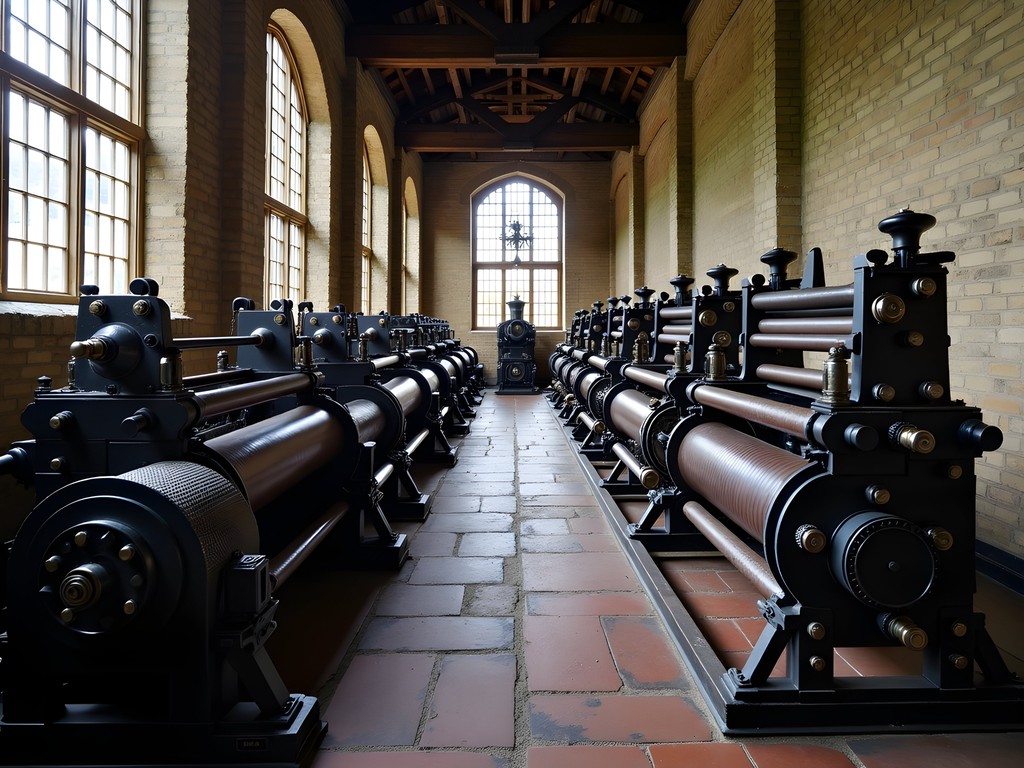
💡 Pro Tips
- Visit on demonstration days to see and hear the impressive machinery in action
- Allow at least 3 hours to explore the entire site including the apprentice house and gardens
- Bring student ID for discounted admission
People's History Museum: The Struggle for Democracy
While Manchester's physical industrial infrastructure tells one side of the story, the People's History Museum reveals the human struggle behind the smokestacks and cotton mills. This free museum (with suggested donation) explores how ordinary working people fought for basic rights we now take for granted.
The Peterloo Massacre of 1819 – where peaceful protesters demanding parliamentary reform were attacked by cavalry – happened just a short walk from this museum. As someone who's witnessed coral bleaching events firsthand, I understand how important it is to preserve both natural and cultural heritage before it's lost forever.
The museum's collection of protest banners reminds me of the meditative process of creating something by hand – not unlike the careful attention I bring to massage therapy. These handcrafted textile pieces, some over 200 years old, represent the voices of people fighting for better working conditions, voting rights, and social justice.
For students researching this period, I recommend picking up a historical walking guide to connect the museum exhibits with actual locations around the city. Manchester's radical history is written into its streets, and understanding the geography helps bring the stories to life.
Make sure to check the museum's website for their rotating special exhibitions and free guided tours – these provide even deeper context for understanding how Manchester's industrial might sparked democratic movements that changed the world.
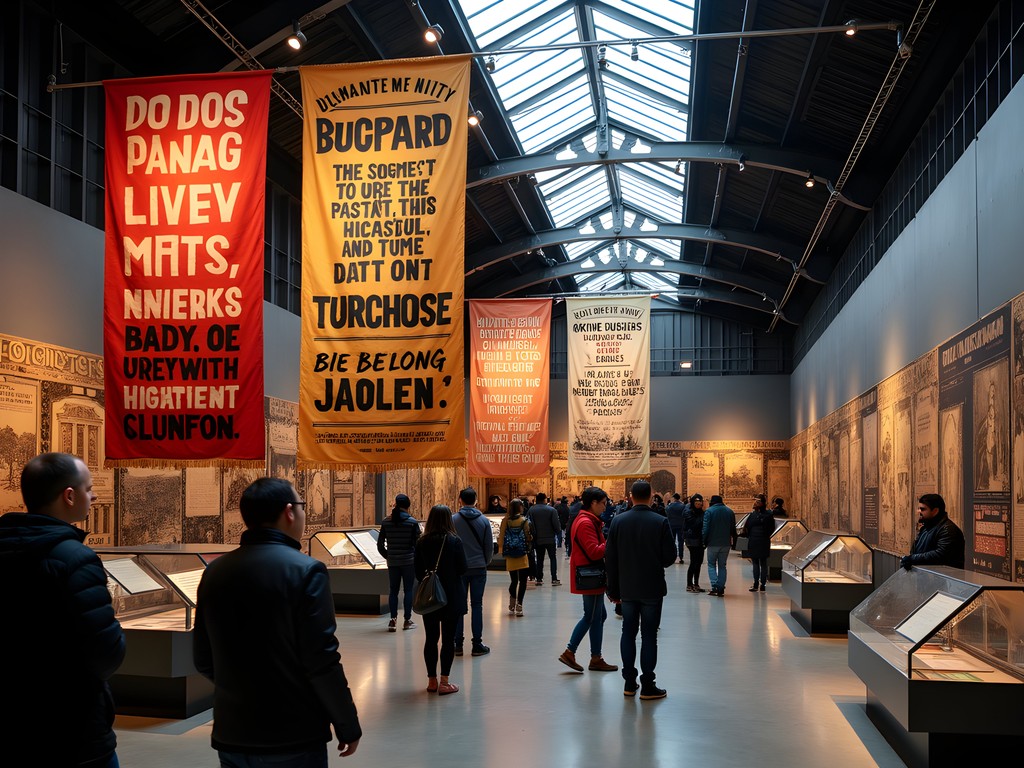
💡 Pro Tips
- Visit on weekdays to avoid weekend crowds and have more space to explore the exhibits
- Check the schedule for free guided tours which offer excellent context
- Don't miss the interactive displays that let you explore historical documents and photographs
Science and Industry Museum: Innovation Hub
The Science and Industry Museum occupies the site of the world's first passenger railway station – a fact that still boggles my mind. As someone who's traveled to remote reefs accessible only by boat, I can appreciate how revolutionary train travel must have felt in 1830.
Housed in historic warehouses and the former Liverpool Road Station, this free museum showcases Manchester's role in scientific breakthroughs that changed our world. The textile gallery demonstrates how mechanical innovations transformed cotton processing from a cottage industry to mass production – a bit like watching the complex symbiotic relationships in a coral ecosystem, where each species plays its specialized role.
The working steam engines are the highlight for me – their rhythmic movement reminds me of ocean swells. I find myself instinctively matching my breathing to their pace, much as I might do during a deep tissue massage session. There's something profoundly connecting about witnessing these machines that bridged human labor and industrial power.
For students, I recommend bringing a pocket notebook to jot down interesting facts and observations. The museum is packed with information, and having a dedicated place to record your thoughts helps with later research.
Don't miss the Textiles Gallery with its demonstrations of spinning and weaving machinery. The thunderous noise and vibrations of these machines in action gives you a visceral understanding of what working in a 19th-century mill must have felt like – something no textbook can convey.

💡 Pro Tips
- Time your visit to catch the steam engine demonstrations – check the daily schedule upon arrival
- Allow plenty of time for the textile machinery demonstrations which run at specific times
- Visit the original 1830 railway station building to understand Manchester's transportation revolution
Ancoats: The World's First Industrial Suburb
Just northeast of the city center lies Ancoats – what many historians consider the world's first industrial suburb. Walking these streets feels like exploring an underwater archaeological site, where layers of history are visible if you know what you're looking for.
The massive red-brick cotton mills like Murray's Mills and Murrays' Mills stand as monuments to Manchester's industrial might. Their imposing facades remind me of the silent strength of a whale shark – massive yet somehow elegant in their utilitarian design. The canal that runs through Ancoats once brought raw cotton in and finished textiles out, creating a flow of materials not unlike ocean currents distributing nutrients.
For students on a budget, I recommend joining one of the free walking tours offered by Manchester Guided Tours. These volunteer guides share fascinating stories about the area's development and the waves of immigration that created a vibrant working-class community here.
Today, Ancoats has undergone significant regeneration, with many former industrial buildings converted to apartments, offices, and trendy eateries. It's a bit like watching a coral reef recover after bleaching – new life emerging in different forms but still connected to the underlying structure.
If you're spending the day exploring on foot, a lightweight daypack is perfect for carrying water, snacks, and a rain jacket (this is Manchester, after all). The area rewards slow exploration, and there are plenty of excellent coffee shops where you can rest and reflect on how these buildings transformed not just Manchester but the entire world.
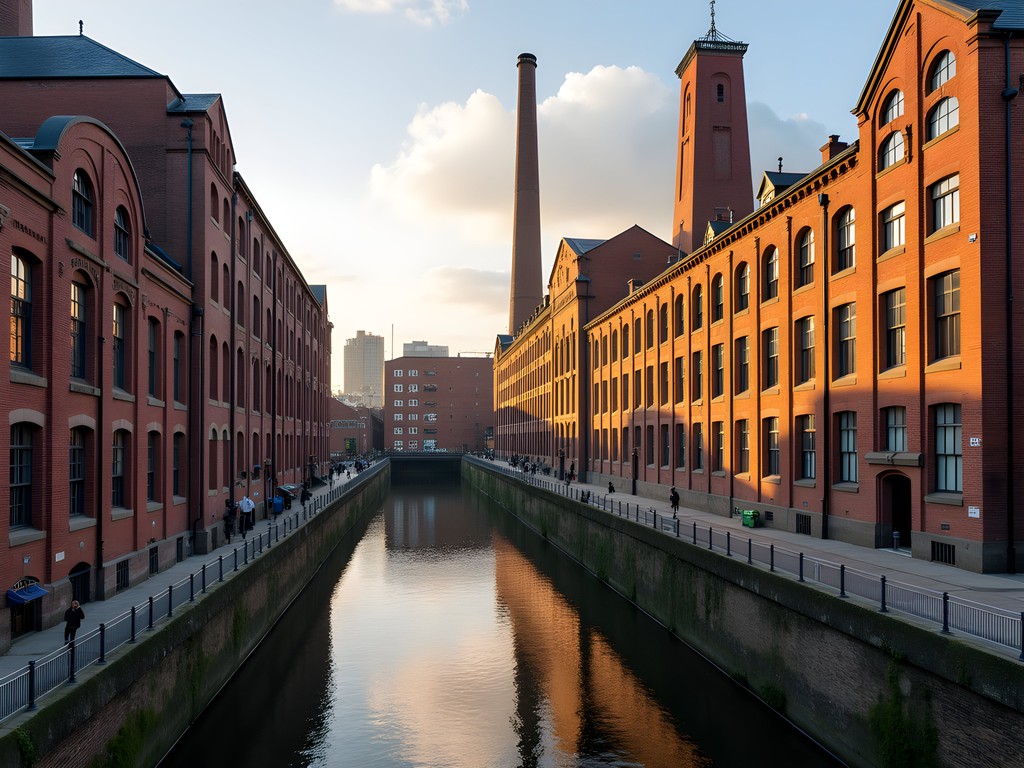
💡 Pro Tips
- Look up to notice architectural details like loading bays and ornate ironwork on the mill buildings
- Visit in the late afternoon when the low sunlight brings out the rich color of the red brick
- Download the free Ancoats Heritage Trail app for a self-guided tour with historical context
Final Thoughts
Exploring Manchester's industrial heritage sites might seem worlds away from my usual marine adventures, but I've found unexpected parallels between these brick-and-mortar monuments and the living reefs I typically photograph. Both represent complex systems where each component plays a vital role in a larger story of adaptation and survival.
As a massage therapist, I'm trained to feel how everything in the body connects – and Manchester's industrial sites demonstrate similar interconnections between water power, mechanical innovation, labor movements, and social change. The city's transformation during the Industrial Revolution wasn't just about machines and factories – it was about people adapting to profound changes in how they lived and worked.
For students exploring these sites, take time to consider both the technological marvels and the human costs. Manchester's industrial heritage offers powerful lessons about innovation, exploitation, resistance, and reform that remain relevant today. Whether you're studying history, engineering, politics, or social sciences, these sites provide tangible connections to the forces that shaped our modern world.
As my grandfather would say about reading the ocean's patterns: look beneath the surface, and the deeper stories reveal themselves.
✨ Key Takeaways
- Manchester's industrial sites tell interconnected stories of technological innovation and social change
- Many significant historical sites are free or budget-friendly for students
- The city's canal network provides a physical framework for understanding its industrial development
- The human stories behind the industrial revolution are as important as the technological breakthroughs
📋 Practical Information
Best Time to Visit
year-round, though spring and autumn offer pleasant temperatures for walking tours
Budget Estimate
£50-100 for a weekend excluding accommodation
Recommended Duration
2-3 days
Difficulty Level
Easy

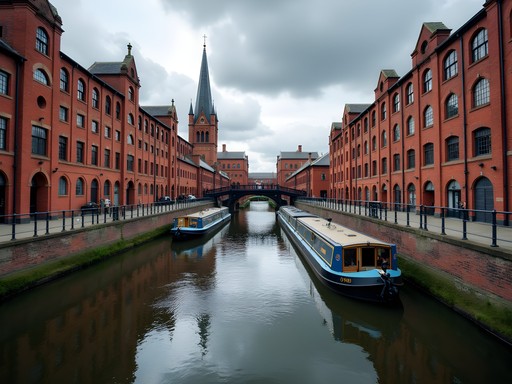
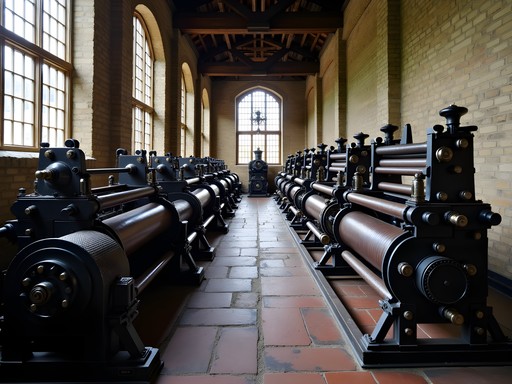





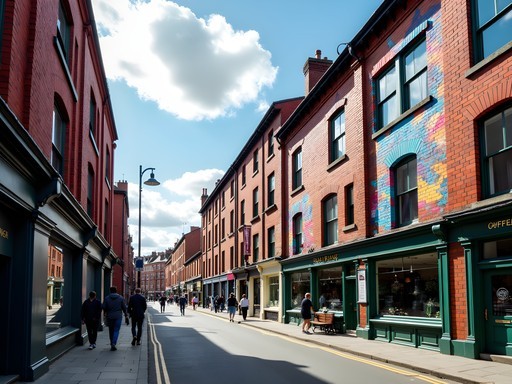
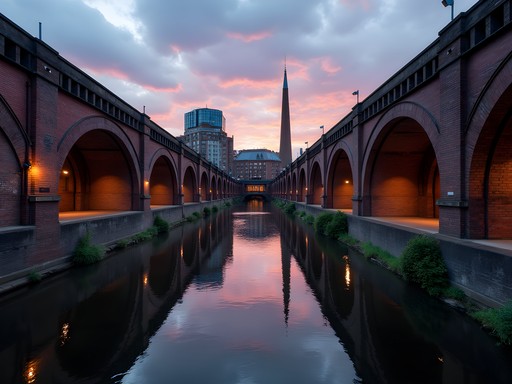






Comments
wanderpro
Love seeing posts about Manchester that aren't just about football! The industrial history is so underrated. Great pics too!
summerwalker
Right?! I was surprised how much I enjoyed the Science and Industry Museum. Those old steam engines are massive!
wanderpro
The textile machines blew my mind too. So loud when they turn them on for demonstrations!
Frank Garcia
Excellent breakdown of Manchester's industrial sites, Jack. I'd add that the transportation network makes visiting these sites remarkably efficient. The Metrolink tram system connects most major historical points, and I found the day pass to be cost-effective. For those with limited time, I'd recommend prioritizing Quarry Bank Mill - the working machinery demonstrations are fascinating from an engineering perspective, and the contrast between the mill owners' house and workers' cottages provides a stark visualization of the class divide that fueled much of the era's social reform movements. I documented my visit using my travel journal which has dedicated city maps perfect for industrial heritage trails.
explorebuddy
Planning to visit in December. Will these sites still be good in winter? Or should I wait for warmer weather?
Frank Garcia
Winter is actually perfect for these industrial sites! They're mostly indoors, and the museums are less crowded. Just bundle up for the canal walks. Manchester does a great Christmas market too if you're there in December.
explorebuddy
Thanks Frank! That's exactly what I needed to know. Definitely keeping it on my December itinerary then!
summerwalker
Just got back from Manchester last month and hit most of these spots! The Canal Network was my absolute fave - did one of those walking tours where the guide dressed up as a Victorian factory worker. So much more interesting than I expected! The People's History Museum was eye-opening too. Didn't realize how much the working class struggle shaped modern politics. Great post Jack!
Jack Lawson
Cheers for that, summerwalker! Those costumed guides are brilliant, aren't they? Brings the whole industrial story to life in a way that reading plaques just can't match.
blueking
WOW! Just booked my trip to Manchester after reading this! Never thought I'd be excited about industrial history but those canal photos are amazing! Can't wait to explore this side of England instead of just London for once!
nomadone
You won't regret it! Make sure to check out Ancoats too - old cotton mills turned into cool apartments and restaurants. Really interesting area.
blueking
Thanks for the tip! Adding it to my list!
moonace
The People's History Museum was my favorite spot in Manchester. Really makes you think about how far workers' rights have come!
Jack Lawson
Agreed! Those displays about the early union movements and suffragettes were powerful stuff.
Nova Rice
Jack, you've captured the gritty charm of Manchester beautifully! I visited last month and was surprised by how the industrial heritage has been reimagined with such style. The Northern Quarter's transformation from textile warehouses to trendy boutiques and cafes is another example of this evolution. I stayed at the Kimpton Clocktower Hotel (formerly The Palace) - it's a stunning Victorian building with an incredible glass dome that was once the headquarters of an insurance company during Manchester's industrial heyday. I used my city guide to find some hidden gems too - there's a walking tour map in there that connects many of these industrial sites. The contrast between Manchester's industrial past and its modern creative scene is what makes it so fascinating!
travel_with_mike
Great shot of the canal network! The lighting is perfect.
happyking
How accessible are these industrial sites for someone with mobility issues? My dad uses a walking stick but loves industrial history.
Jack Lawson
Great question! The Science and Industry Museum and People's History Museum are very accessible with lifts and ramps. Quarry Bank Mill has some accessible areas but the historic nature means some parts are trickier. They have a detailed accessibility guide on their website worth checking before visiting. The canal paths vary - some are well-paved but others can be uneven.
happyking
Thanks for the detailed info! Will definitely check those guides before planning our trip.
Timothy Jenkins
Brilliant piece on Manchester's industrial heritage, Jack! I visited these sites last autumn and was equally impressed. The canal network is truly fascinating - I'd recommend taking one of the narrowboat tours for a different perspective. The guides are incredibly knowledgeable about the history. Also worth mentioning is the John Rylands Library - while not strictly industrial, it was built with textile fortune money and showcases the wealth that the industry generated. The neo-Gothic architecture is stunning and really shows how the industrial revolution transformed not just manufacturing but culture and education too.
moonace
The John Rylands Library is amazing! Those reading rooms feel like you're in Hogwarts.
Jack Lawson
Thanks Timothy! Great shout about the narrowboat tours - I ran out of time for that. And you're spot on about John Rylands - that reading room is spectacular!
Venture X
Premium card with 2X miles, $300 travel credit, Priority Pass